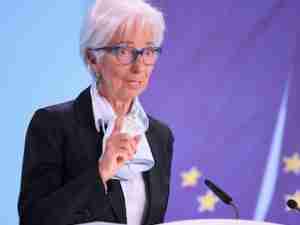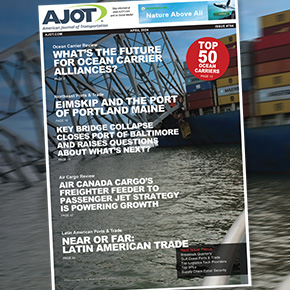Theresa May is facing a crisis after pro-Brexit ministers paired up with Conservative hardliners to demand a clean break from the European Union’s customs system, rejecting her plea for a compromise solution.
The U.K. prime minister was outnumbered at a meeting of her inner Cabinet on Wednesday, with ministers unable to agree on either of the middle-of-the-road customs options that May had proposed.
Speaking afterward, one senior British official said that with both proposals apparently dead, she could have as little as a week to get a compromise or face the stark choice between staying in Europe’s customs union or leaving without a deal.
Either could see rebels in her party destroy her government.
A day that started with a pro-Brexit group of Conservative lawmakers threatening to withdraw support from the prime minister if she insisted on her proposed customs relationship with the European Union ended with her newest appointee, Home Secretary Sajid Javid, weighing in against her plan, joining other senior ministers in defying her.
Take a peek inside Theresa May’s Brexit Cabinet, that just messed her up
It was a reflection of May’s impossible position: Before she can even start trying to sell a deal to the EU, she has to find a proposal that both her Cabinet and Parliament will support. Both are fundamentally split, with each side strong enough to block a plan, but not to push one through.
Brexit Secretary David Davis, addressing Parliament on Thursday, seemed emboldened to be critical of May’s preferred option: “it’s a brand new idea, it’s never been tested anywhere in the world.” Nor did he seem to offer a “clear position” on customs: “I don’t undertake to put an artificial deadline on something as important as that.”
Pound Shrugs
The pound has fallen more than 1 percent over the past week. Strategists say the local elections and the removal of a Remainer from the Cabinet could weigh on sterling.
May has so far survived by avoiding a final confrontation with either side. So it was no surprise that the “War Cabinet” put off its decision once again on Wednesday afternoon.
The meeting was held to discuss which of two possible customs arrangements—one backed by May and one favored by Brexit supporters—the government should push for.
May reiterated that she wanted to leave the EU’s customs union, and then set out once again her red lines for any new deal: There should be no hard border between Ireland and Northern Ireland, no border between Northern Ireland and the rest of the U.K., Britain should be able to negotiate its own trade deals, and trade with the EU should be as frictionless as possible.
Red Lines
There was acceptance in the room that these red lines conflict with each other, according to two people present, and that the government would need to decide which were most important.
May set out the case for her “New Customs Partnership” model, which would address the Irish issue. If, while it was being prepared, Britain stayed inside the EU’s customs union, it would also solve the trade friction question.
The prime minister’s position was supported by Chancellor of the Exchequer Philip Hammond, Business Secretary Greg Clark, Cabinet Office Minister David Lidington and Northern Ireland Secretary Karen Bradley.
It was known that Foreign Secretary Boris Johnson, Davis, Trade Secretary Liam Fox and Environment Secretary Michael Gove were on the other side of the argument. Defence Secretary Gavin Williamson, who campaigned to stay inside the EU, has also become a backer of a harder Brexit.
The New Guy
The unknown quantity in the room was Javid.
A reluctant campaigner against Brexit, he might have been swayed by loyalty to May or the economic voice of Hammond. Instead, he told the prime minister that though he had only been in his job three days, he felt strongly her preferred option was unworkable. That left May outgunned, and Brexit backers convinced that they had killed off her plan.
Others present disputed that anything had been that final. They pointed out there had been no vote—the point of the meeting is to reach a consensus—and said that both options remained under serious consideration.
Officials have now been told to urgently work up changes to the options, to reflect the objections from the meeting. While there are practical concerns about how the “New Customs Partnership” would work, the “Maximum Facilitation” plan backed by Johnson and Davis would, as it stands, not solve the Irish border issue.
They have only days to find a solution. One U.K. official said they believed the EU would want to see something before the end of next week.
Also present at the meeting was Conservative Party Chief Whip Julian Smith, there to explain the Parliamentary arithmetic.
Rees-Mogg Delivers Ultimatum Over May’s Post-Brexit Customs Plan
This calculation is far from straightforward, with rebels on both wings of the party. Jacob Rees-Mogg’s 60-strong European Research Group came out strongly against May’s preferred option on Wednesday morning, but a smaller group of Tories is likely to unite with the opposition Labour Party to try to push May toward a customs union.
And shortly after the meeting ended, the upper House of Lords inflicted the latest of a series of defeats on May, voting through an amendment to her flagship Brexit bill designed to ensure there is no hard border in Ireland.
No date has been set for the next meeting, but according to her officials, May understands the urgency.






